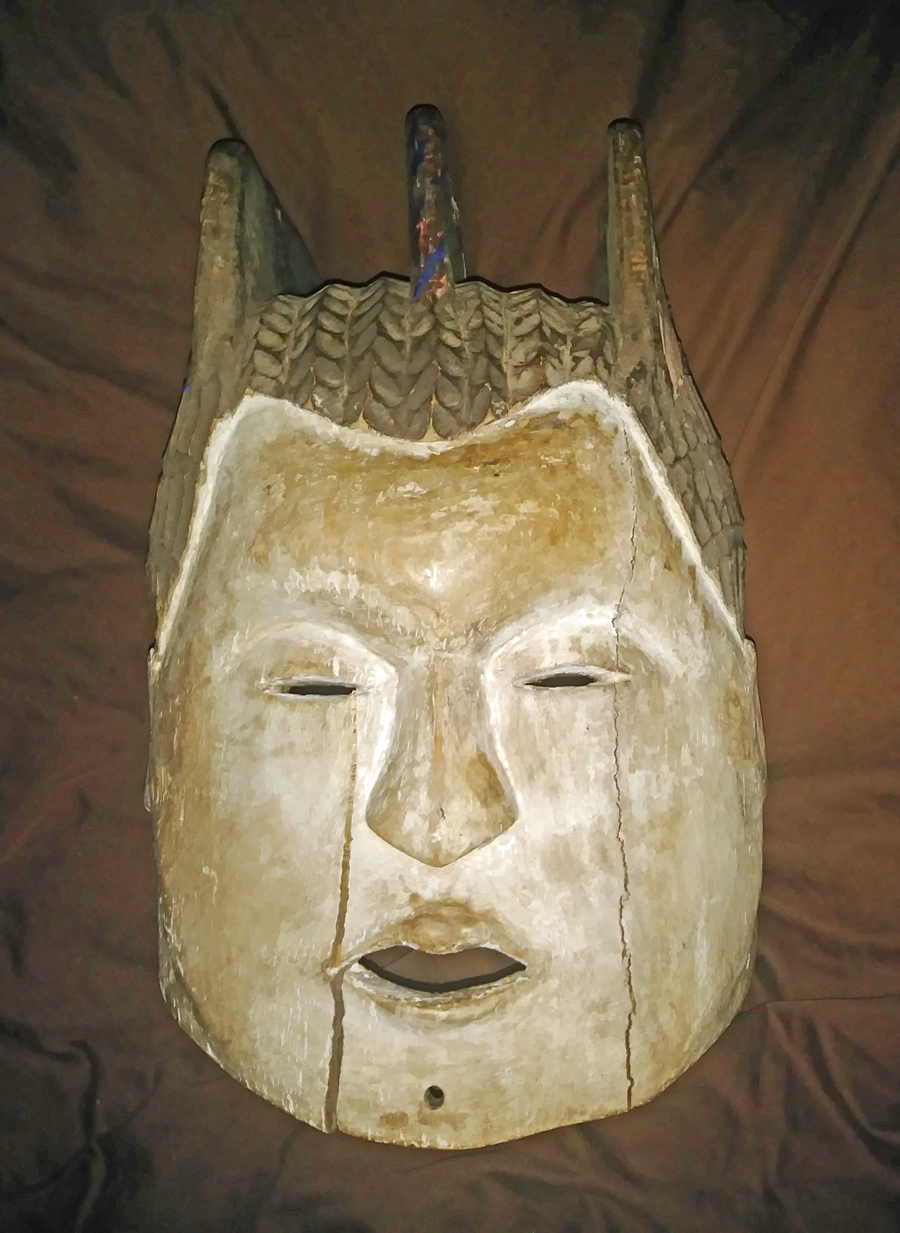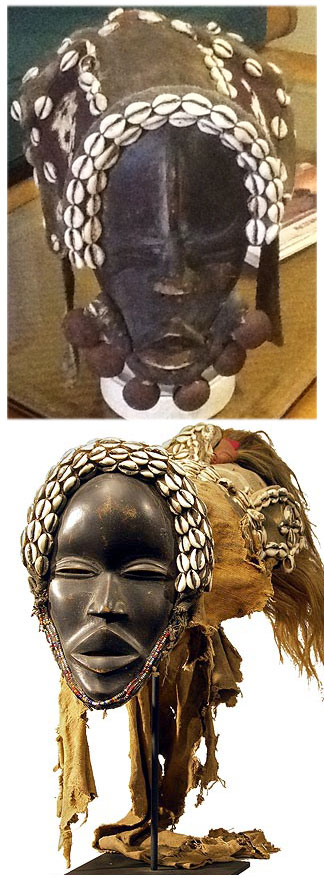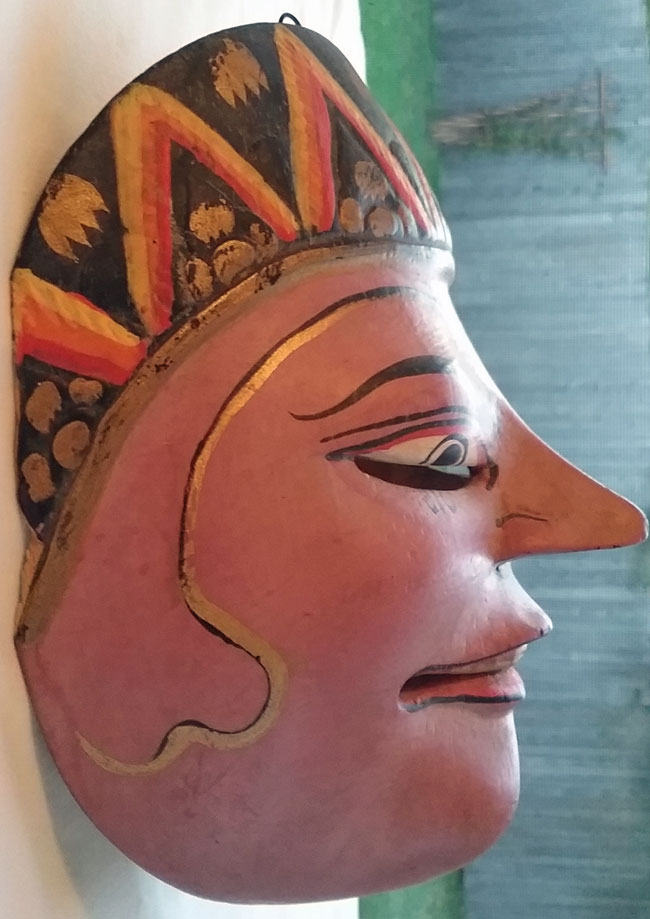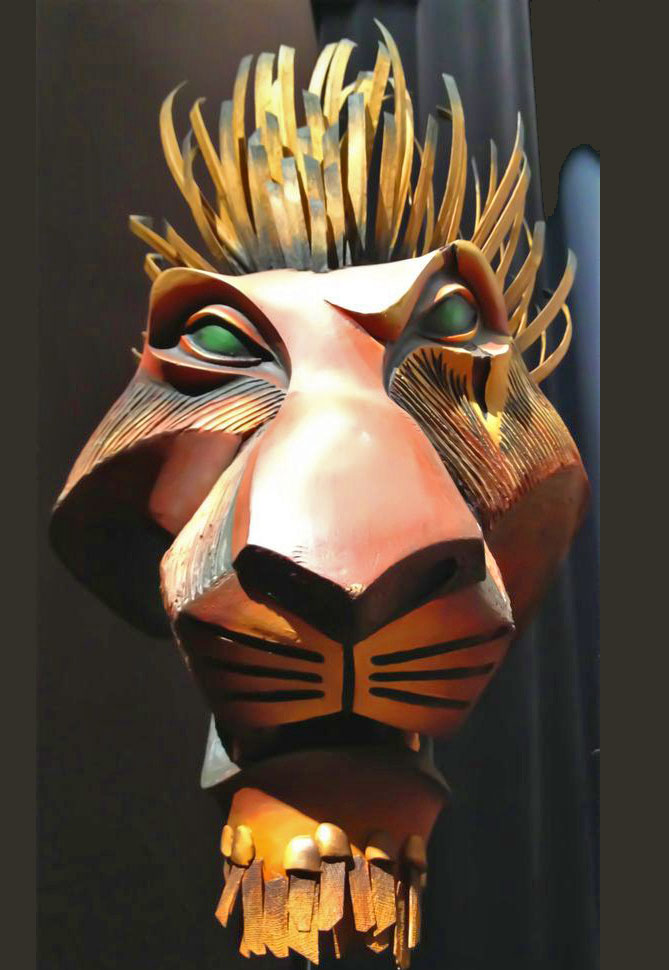 Q: I’ve done as much research as I can and have found nothing similar. My story with the mask is interesting; I found it while out on a bike ride. It was sitting on a sand bar, in the middle of a river (Platte / Denver). The form caught my eye from afar and initially I thought it was a child’s car seat. It does not appear to have any water damage. The only damage is the missing piece by the eye, on one side and the two expansion/contraction cracks, in the white face one the other side. It has been that way since I came a cross it. I have not done anything to it other than try to keep it safe. Tom, 1661
Q: I’ve done as much research as I can and have found nothing similar. My story with the mask is interesting; I found it while out on a bike ride. It was sitting on a sand bar, in the middle of a river (Platte / Denver). The form caught my eye from afar and initially I thought it was a child’s car seat. It does not appear to have any water damage. The only damage is the missing piece by the eye, on one side and the two expansion/contraction cracks, in the white face one the other side. It has been that way since I came a cross it. I have not done anything to it other than try to keep it safe. Tom, 1661
A: The best known double-faced helmet masks (Janus Head) come from the Ejagham/Ekoi people in lower Nigeria and western Cameroon, which is called the Cross Rivers. I think this is what you found. The odds are it was a repro made for tourist or export, but I can’t tell after it’s been in the Platte River. Try to find someone in Denver who’s an African art expert. I think it looks great as is, and the way you got it is a good story. However, authenticating this piece may cost some money.
Here is what Africa Direct has to say: A number of different groups living within close proximity to the Cross River share language, political and religious structures which influences their arts. Though generally ruled by a local elder Cross River societies depend to a great extent upon a number of men’s secret societies to regulate the community and to instruct and initiate men into various levels of their organization. The Ejagham identified as the Ekoi in the past have a men’s secret society called Ngbe, whose members are known for wearing large skin covered masks worn over costumes covering the body. Each Ngbe chapter would have a lodge within which a range of ritual equipment was kept including masks. Ngbe membership was originally identified with a warrior’s society on the Cameroon side of the Cross River region, however today Ngbe members are engaged in social control and political activities. Ngbe members use ritual equipment to initiate new members and celebrates their lives during funerals. 








5 Comments
Tom
Note:
It is approx. 18″ tall x 12″ circumference. Large enough to fit over an adult’s head and rest on the shoulders. There are several small holes, drilled by hand, not machine, around the base, so as to be affixed to wearer.
Would love to hear any additional info from the community regarding history or value. Thank you.
Bob Ibold
It is approx. 18″ tall x 12″ circumference. Large enough to fit over an adult’s head and rest on the shoulders. There are several small holes, drilled by hand, not machine, around the base, so as to be affixed to wearer.
Chris
Hey Bob, I have a question on restoration: maybe this mask is old and authentic. But it has serious damage, actually part of the face is missing. Which in my opinion lowers its value next to zero – it’s really broken. However, would it be viable to repair it in such a way as to replace the missing part? would it be “culturally correct” if a “Westerner” replaces such a big part of an African mask? Would repair in such way restore the value of the mask or would it remain a piece without much worth on the market? thanks for your insights
Bob Ibold
Sorry to take so long to answer. The correct way is to make the replacements clearly visible with slightly lighter-colored putty. Don’t sand the origin areas. Viewers must be able to see what was done. This will increase your mask’s value.
Bob Ibold
correction: “Original” areas.